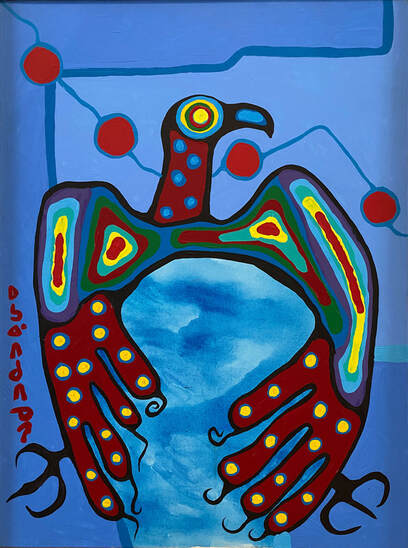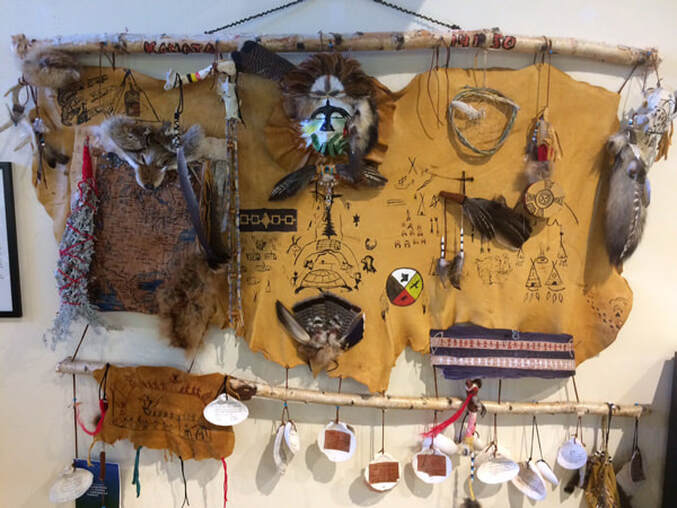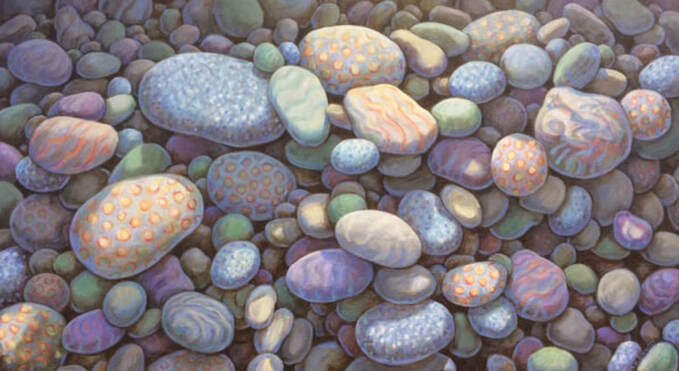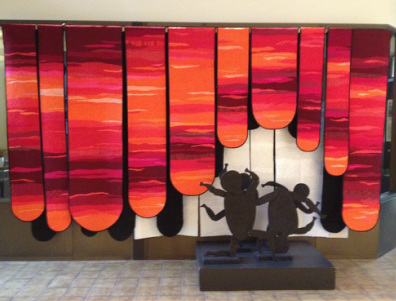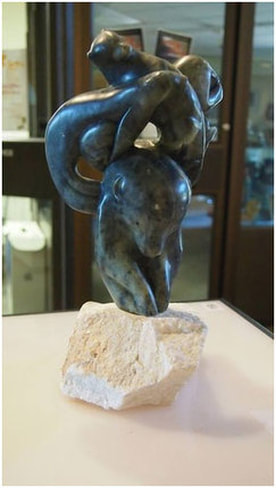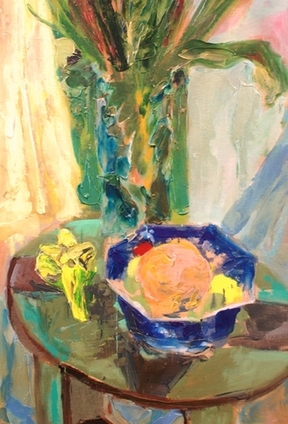Winter WonderlandDecember 2023
Welcoming winter with our current lobby display featuring artwork from our permanent collection by artists David Bierk, Robert-Ralph Carmichael, Ken Danby, Myrtle Harrison, Jean Hay, and Zoltan Szabo. |
|
Woodland Art from the Permanent Collection
January 2023 Our current Lobby display features artwork from our permanent collection by Indigenous artists Norval Morrisseau, John Laford, Jackson Beardy, and Eddy Cobiness. |
|
Busy Pollinators: Bees, Butterflies, and Birds
August 2022 Our current Lobby display features artwork by artists Aganetha and Richard Dyck, Norval Morriseau, Robert Chelmick, Gus Mane, and Will Ogilvie. The selection focuses on pieces articulating in detail the fascinating nature of bees, butterflies, birds, and their natural environment in the spirit of the Summer season. Featured artworks take the form of chromogenic prints, acrylic and watercolor paintings, and a macro photograph. |
|
Celebrating the Group of Seven
July 2021 The AGA will be celebrating the Group's impactful and inspirational work by showcasing pieces from the permanent collection created by members of the Group of Seven.
|
|
Welcome Winter
March 2021 Join the AGA in welcoming winter! The AGA will be celebrating the beauty of winter by showcasing pieces from the permanent collection.
|
|
A.J. Cason (Canadian, 1882–1974)
Oxtongue Lake, 1978 Oil on Board, 30.1" x 38". Collection of the Art Gallery of Algoma; gift of the artist. |
Group of Seven Collection
July 24, 2020 2020 marks the 100th Anniversary of the formation of the iconic Group of Seven. The AGA will be celebrating the Group's impactful and inspirational work by showcasing pieces from the permanent collection created by members of the Group of Seven.
|
|
Nérée De Grâce (Canadian, 1920–2002)
Le Petit Forgeron, 1979 Oil on Canvas board Collection of the Art Gallery of Algoma; Gift of the Estate of Thomas John Huckson |
Aba Bayefsky (Canadian, 1923–2001)
Caravan, India, 1958 Mixed media on Paper Collection of the Art Gallery of Algoma; Gift of the Algoma Art Society |
|
Sally Gibson
|
|
John Laford
|
|
John Hartman (Midland, ON 1950 - )
Georgian Bay Oil on linen Collection of the Art Gallery of Algoma Donated by the Artist |
John Hartman
The artist John Hartman was raised on the southern and eastern shores of Georgian Bay which played an influencing role in the artist's visual narrative of the landscape. Hartman’s path of painting the intimate and intertwined relationship between people and place, took a turn in 2003 when he began to paint aerial views of cities as living organisms.
|
|
Jean Gibson Burke
“There’s talent in everyone, so I think everyone should try and express themselves the best they can.” - Jean Burke
Jean Gibson Burke, AOCA (b. June 20, 1927; d. March 14, 2014) was born, raised and spent much of her life in Sault Ste. Marie, Ontario. Her lifelong passion for art developed early on in her life, and throughout elementary and high school, she was often the student who was given charge of creative projects. Knowing she wanted to be involved in the art world somehow, she attended art school and graduated with honours from the Ontario College of Art. Following that she worked for two years as a commercial artist with a packaging design firm in Toronto. |
|
AlgoMini 2014 Art Show and Sale
June 27th – September 2nd 2014
Given the success of last season's AlgoMini, the AGA once again is having a special summertime art exhibition and sale featuring local artists working in a variety of media who have captured their interpretations of the Algoma region in a small scale. |
|
This project was proudly supported by the following:
Graffiti Reframed Photographers Alisha Beauchesne Dana Chalifoux Alissa Difumeri Sarah Gaudette Micheal McAdams Seamus O’Flanagan Tessa Rotermann |
Graffiti Reframed, Get Photograffed
May 1st – 7th, 2014
The Graffiti Reframed exhibition, ‘Get Photograffed’, was intended to begin a community conversation about graffiti – its role, purpose, genesis and where it is located in terms of creative expression and artistic practice. The exhibition provided a ‘first step’ in the dialogue by engaging youth in documenting existing graffiti and positioning it within a formal exhibition space that is typically reserved for art of a different nature. The show provided the opportunity to re/visit perspectives about graffiti as the community moves forward in investigating its role and impact in social and economic development. |
|
New Additions: Selections from the AGA Permanent Collection
The Art Gallery of Algoma (AGA) was pleased to share a selection of recent acquisitions to its Permanent Collection. These works, by artists including John Hartman, Ken MacDougall, Irene Akoptanuak, Dr. Roberta Bondar and Abraham Anghik Ruben, have been generously gifted by donors. The Legacy Painting was created by John Hartman in commemoration of the City of Sault Ste. Marie’s 100th birthday and was acquired through the support of the Building Communities through Arts and Heritage program, Department of Canadian Heritage.
|
|
AlgoMini 2014 Art Show and Sale
June 28th – September 3rd, 2013
The AlgoMini Art Exhibition and Sale, a special summertime show presented through the Art Gallery of Algoma (AGA) Gallery Shop in the AGA Lobby, featured the works of 25 artists of all ages and experience levels, working in a variety of media, who have captured their interpretations of Algoma in small scale: all works shown are roughly one foot by one foot. |
|
VERNA[cu]L[ar]
March 27th, 2013 - April 29th, 2013
This special exhibition ushers in the Spring season at the AGA and brings together the works of three artists – Karin Doleske, Darryl Hughto and Tom Hodgson – in an exploration of the vernacular, the language, of painting. The vocabulary of marks, brushstrokes, and areas of addition and removal of material evoke natural forms and motions, blend the boundaries between abstraction and representation, and speak of the act of painting as well the creative process. Further, as we enjoy this vernal time of year, we are reminded of the fresh palette in the landscape around us and the cyclical pattern of the seasons, which often evokes the circular form. The colours and forms present in these works further remind us of the lengthening days and the metamorphosis around us. |


